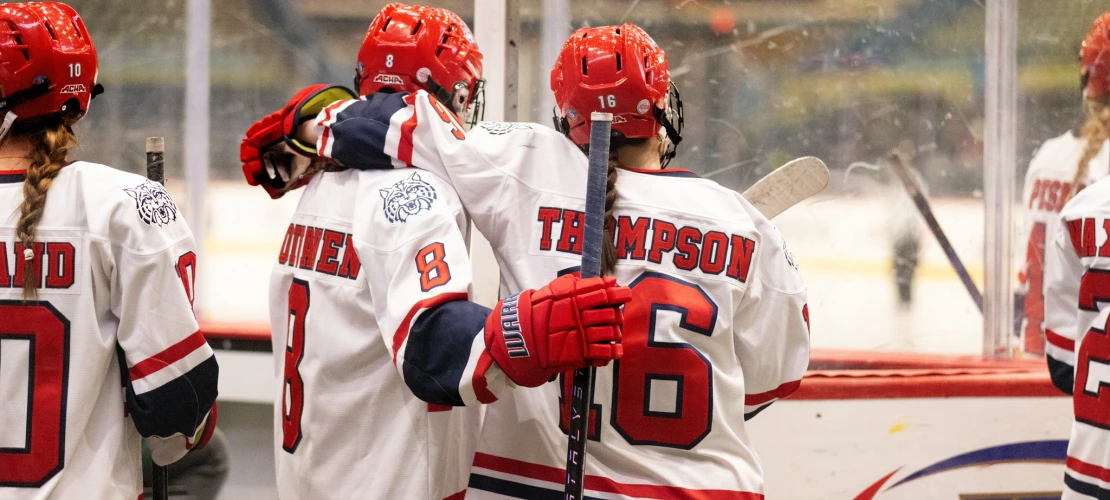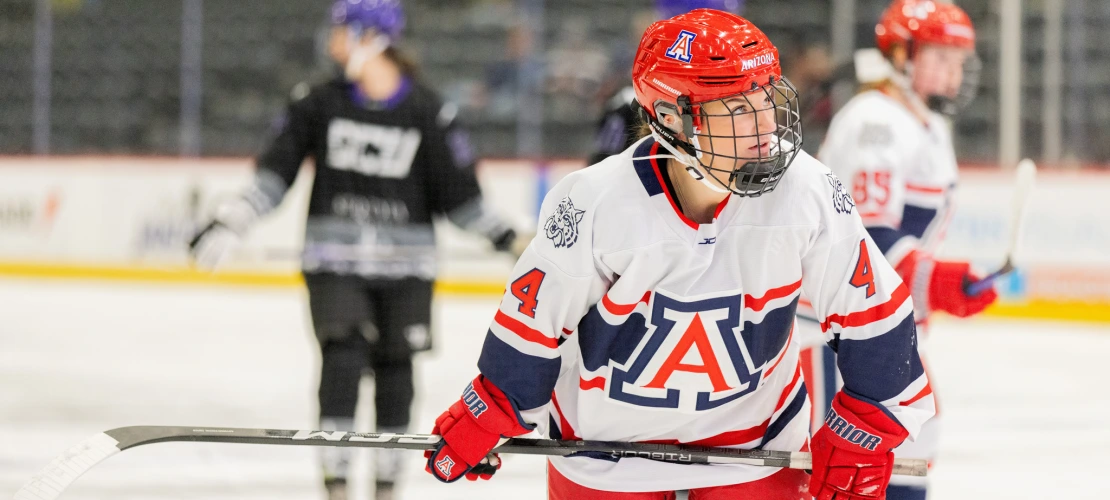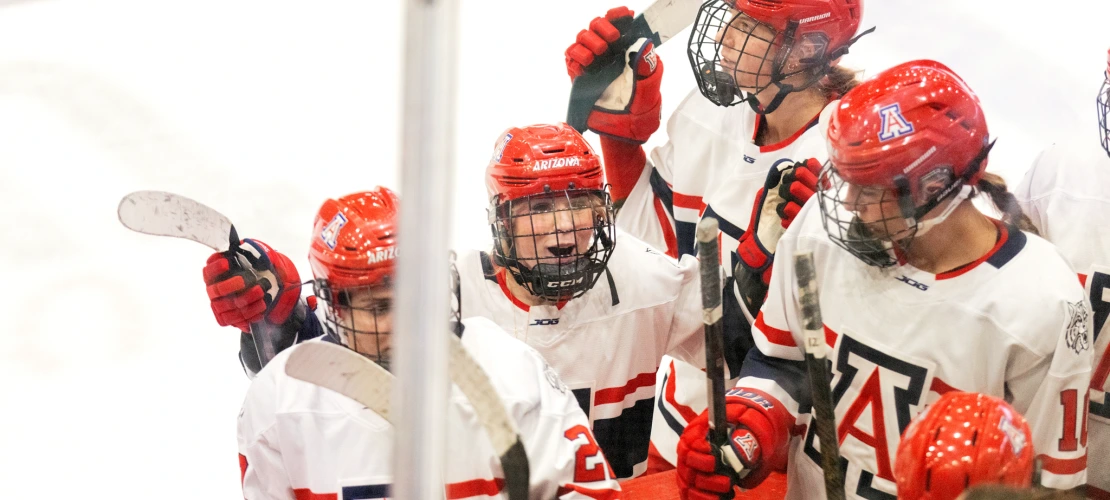Ice in the Desert
After 18 years, the U of A women’s hockey is back on the ice.
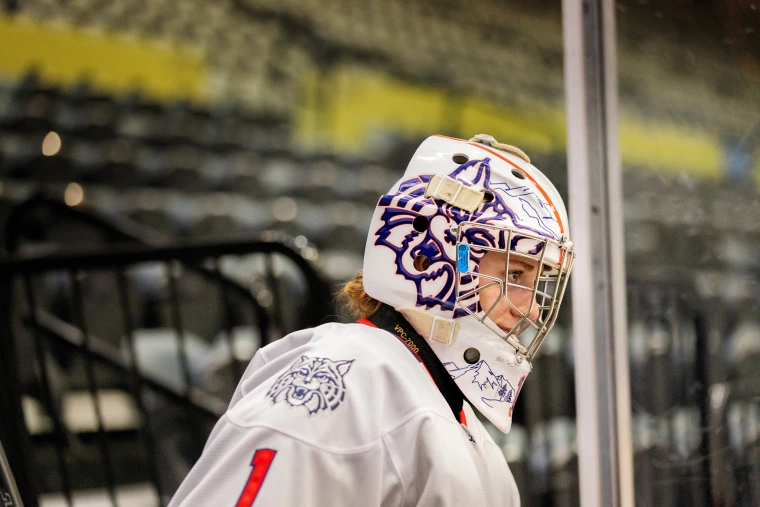
Olivia Sorlie
Chris Richards
Caitlin Hogan came to the University of Arizona to build a team from nothing.
A Minnesota native, she grew up with a love for sports and had a natural talent for skating.
“My parents remind me of the time that I came home from kindergarten, and I was like, ‘Hey, I’m going to play hockey.’ So they got me the equipment, they got me into the sport, and I loved it from the second I hit the ice,” Hogan says.
With no all-female teams for young girls to join, she played on a boys’ team — which is still how many young women interested in the sport get started, she says.
“Once you get up to a certain age, that’s when they start teaching body checking on the boys’ teams,” she says. “And I’m a small person, so I learned how to avoid being hit by improving my speed.”
Hogan went on to play Division I women’s hockey for Minnesota’s St. Cloud State University. After college, she ran a successful fitness facility in California for several years and competed for Team USA in Olympic Weightlifting, but eventually felt a pull to get back into her favorite sport: hockey. While visiting Tucson, she had a series of connections and conversations that led to an incredible opportunity to build the U of A women’s hockey team as the head coach.
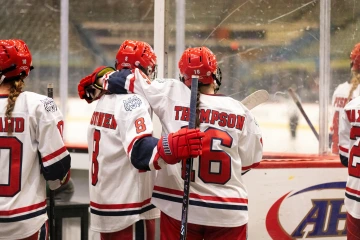
Essi Toivanen and Sofie Thompson
Chris Richards
“This was the perfect opportunity for me to get back into hockey and help grow the sport out west,” she says. “It’s very challenging for young women to get into the sport, and out here, with only one ice sheet in town, it’s even harder. Taking on that responsibility was really interesting to me, as well as growing a team from the foundation up.”
Hogan started recruiting players in 2023, and in September 2024 the team took to the ice for its first game.
“My team is full of hard workers,” she says. “As a player, I was always known for my grit, my tenacity, my no-quit attitude. And that’s what I feel the U of A represents — people who don’t give up. I look for that type of player when recruiting.”
The team attracted many transplants from hockey hot beds like the Midwest and Canada. The biggest draw? “The nice weather,” Hogan laughs. “They don’t have to shovel snow.” Aside from that perk, the women are excited to build something new and show young girls what women’s hockey is all about.
“For me, there’s a lot of pride that comes with it,” says Leila Schultz, a freshman education major from Alberta, Canada, where “you’re in skates by the time you can walk.”
“Coming from somewhere where hockey is so big, to somewhere where hockey is nothing, we’re starting it fresh,” she says.
“Our biggest challenge is that we are so young, and we only have a few upperclassmen that we can look up to,” says Lucy Verderber, a freshman communications major from
Massachusetts. “But I also think it’s a really great opportunity. Our freshman class is huge, so we get to establish a team culture, and coach Hogan is going to bring in players she thinks will fit that.”
Both players agree coach Hogan’s coaching style drew them to Arizona.
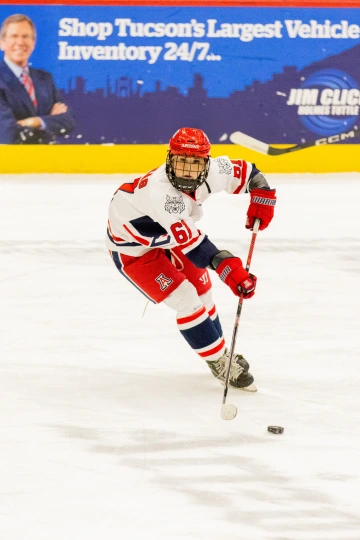
Grace McKeag
Chris Richards
“She puts us first, makes sure that everything we need, we have,” says Verderber. “She’s like our second mother.”
Building a team with 20 new players and getting them all on the same page is a challenge, says Hogan, but an even bigger hurdle is the lack of ice time. The team practices at the Tucson Convention Center — the only rink in town — sharing ice with other teams and working around event schedules. Some weeks, there’s no ice at all. The team packs up their gear, takes it back to their dorms and makes do with what they have, hitting the gym instead.
“There’s no team around the country that has to deal with that,” Hogan says.
Women’s hockey in Tucson has struggled with limitations before. From 1999 to 2007, the U of A’s first women’s team, the Icers, faced high rink fees, travel costs and scarce ice time. Eventually, the challenges led to the club’s dissolution.
“Just like the original team had to deal with fundraising, it’s the same for us as well,” Hogan notes. “Every bit can help. It’s expensive to travel and to keep this team together.”
Hope is on the horizon in the form of the Mosaic Quarter Iceplex, which will end the shortage of ice in Tucson for both U of A hockey teams, men’s and women’s. They will be the Iceplex’s primary tenants. Amenities at the 3,000-seat venue will include locker rooms, an athletic training area, concessions, a pro shop, laundry facilities and more. The Iceplex, which is currently under construction at Pima County’s Kino Sports Complex, is expected to be completed in 2026.
For now, hockey fans can cheer on the U of A at the TCC. Games are free to attend, and Hogan encourages people to come see what women’s hockey is all about.
“It’s not just about hitting, it’s not just about fighting — it’s about fluid play, making good passes and hard shots,” she says. “And I think the women’s games detail that a lot more than the men’s game.”
“It’s nice, looking up into the stands and seeing that people want to watch you play,” Schultz adds. She and Verderber are looking forward to inspiring young girls in the desert to hit the ice and give hockey a try.
Watch Inaugural Season Highlights from the University of Arizona Women's Hockey Team!
Support Wildcat Women’s Hockey at arizonawomenshockey.com.

